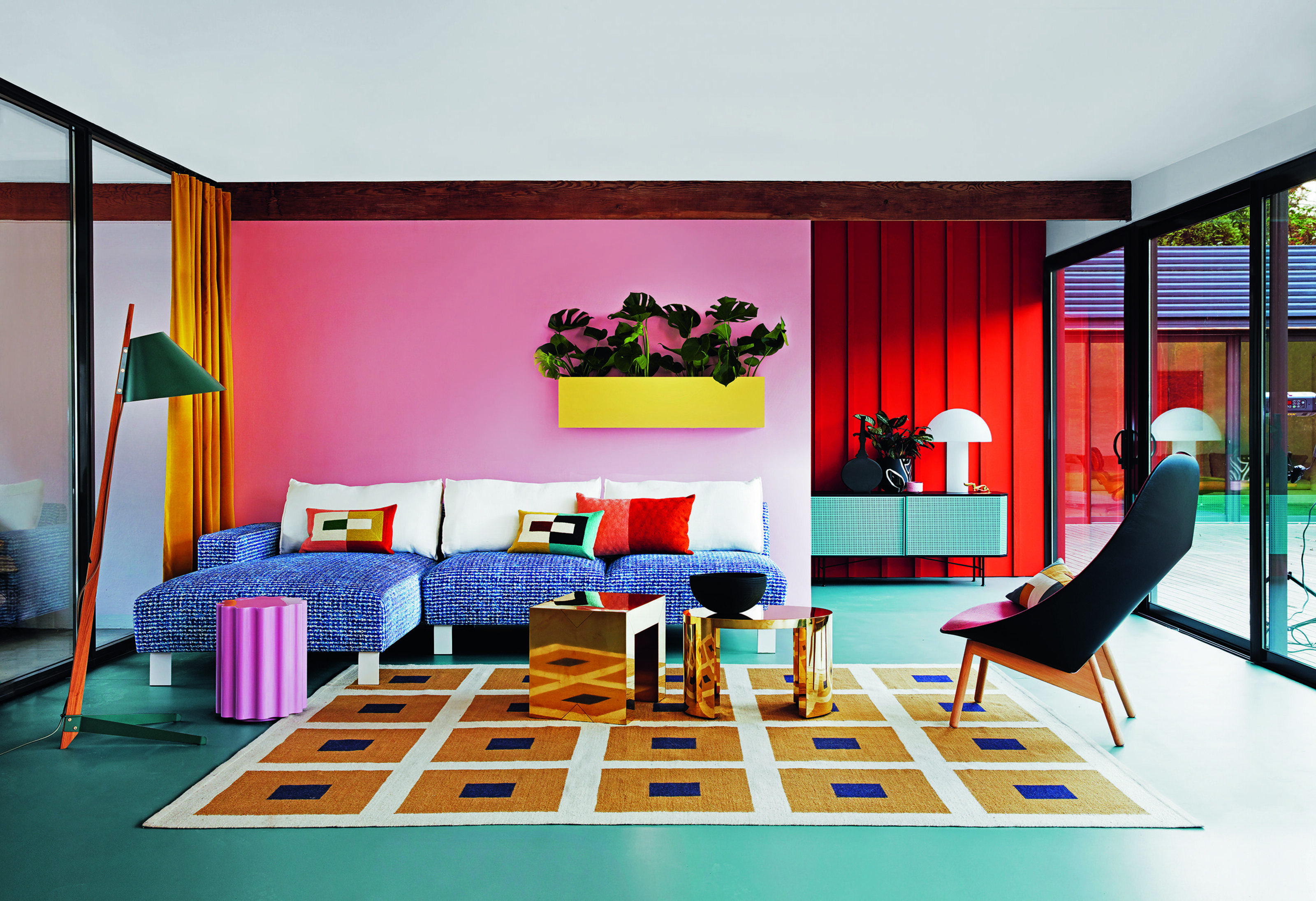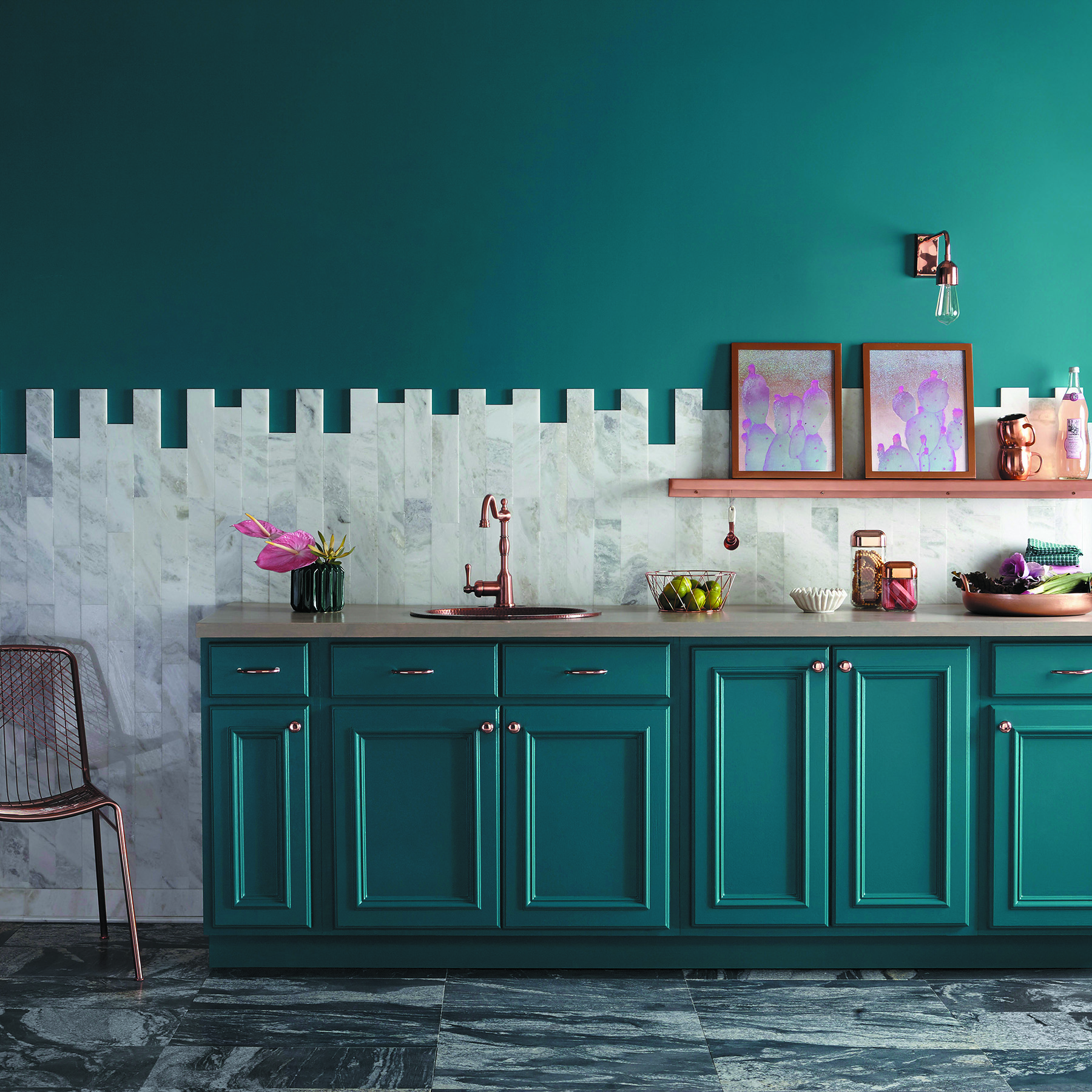How to clean walls without removing paint – 3 expert tips on keeping your paintwork bright and fresh
How do you clean your walls without damaging the paintwork? These painters and decorators share their tips


Knowing how to safely clean your walls without removing your paintwork is a skill very few are clued up on. It might seem obvious - dampen a cloth, wipe the walls, and voila; no more grubby splatters or scuff marks. But alas, this common cleaning mishap is likely to rub away the beautiful paint job you worked so hard to achieve, too.
As much as we all take great pride in our homes, mess is inevitable. High traffic areas or functional spaces like the kitchen often result in dirty scuffs, greasy splatters and unsightly spills. And then there's the constant upkeep that comes with sharing a home with kids. Cleaning your walls just has to be done.
To save yourself the cost of an entire repaint, we've asked some experts in the painting and decorating business for their tips on how to safely clean walls without removing your beautiful paint idea. So buckle up and read this advice before simply grabbing the first cloth and cleaning spray you have to hand (and hint, these aren't what you should be using).

Lilith is an expert at following news and trends across the world of interior design. She's committed to helping readers make the best choices in their homes through sharing practical tips and innovative solutions for all their DIY and painting needs. For this piece she asked painters and decorators for their advice on how to clean your walls without removing your paintwork
1. Determine which paint type you have

Although your natural instinct to a spillage might be to instantly attack it with lots of water and soap, before you make any hasty decisions you should determine what kind of paint you have on your walls.
Different paint finishes have different durability, and whether it's water, latex or oil-based will also play a part too. 'If you don’t remember which type of paint you used, you can always test a small section first before launching into the project,' advises Matt Kunz, President of Five Star Painting.
'Types of paint that hold up the best during cleaning are semi-gloss and glossy enamel paints,' they explain. 'However, flat, satin, and eggshell latex paints may not do so well.'
If you know that you have one of these latter paint types on your walls, the safest option might be to put on a fresh coat rather than attempt to clean. You could also consider hiring a professional wall cleaner.
The Livingetc newsletters are your inside source for what’s shaping interiors now - and what’s next. Discover trend forecasts, smart style ideas, and curated shopping inspiration that brings design to life. Subscribe today and stay ahead of the curve.
2. Start by dusting your walls
Another vital step you should carry out before trying to clean straight away is dusting. A dreaded chore by some, dusting your walls regularly can actually minimize the need for cleaning and improve the life span of your painted walls.
'A microfiber cloth or hand duster can reach into nooks and crannies and pick up dust without spreading it around,' explains Beatrice Flores, cleaning expert at Living Pristine. 'Once the dusting is done, you can move on to washing the walls.'
Skipping out this step could result in a bigger mess than the one you started out with, as you'll be working more dust and grime into your walls leaving a patchy area in its wake.
3. Use a mild formula and wash gently

Now for the serious business. Cleaning stubborn stains may be a challenge, but don't be tempted to reach for harsh chemical cleaners and apply them with lots of elbow grease. To properly clean your walls, 'gentle' is key.
This applies to your method, and the formula you use. In most cases, you can get away with a mild dish soap and warm water. 'Add a little bit of dish soap to a bucket and use a sponge or washcloth to scrub any dirt or stains,' says Beatrice. 'Start at the top of the wall and work your way down, rinsing the sponge or washcloth often to avoid re-depositing dirt on the clean areas of the wall.'
If you have tough stains, she advises using a diluted vinegar solution or a non-abrasive cleaner, testing it in an inconspicuous spot first to make sure it doesn't damage the paint color. It's a good idea to use a towel or sheet on the floor to prevent your flooring getting wet.
A cellulose sponge is also a good option to clean with. For more stubborn marks, try using one in a formula of baking soda and water. 'This is because baking soda is mildly abrasive and may be all that's needed to remove scuffs,' says Matt. 'As you clean, rub in gentle circular motions to minimize the risk of stripping the paint.'
For less serious scuff marks, he recommends using a clean tennis ball to help remove scuffs as the outer layer of felt acts like a soft-bristled eraser. When you’re finished cleaning, it's a good idea to lightly clean the entire wall with a damp cloth to remove any soap residue.

Lilith Hudson is a freelance writer and regular contributor to Livingetc. She holds an MA in Magazine Journalism from City, University of London, and has written for various titles including Homes & Gardens, House Beautiful, Advnture, the Saturday Times Magazine, Evening Standard, DJ Mag, Metro, and The Simple Things Magazine.
Prior to going freelance, Lilith was the News and Trends Editor at Livingetc. It was a role that helped her develop a keen eye for spotting all the latest micro-trends, interior hacks, and viral decor must-haves you need in your home. With a constant ear to the ground on the design scene, she's ahead of the curve when it comes to the latest color that's sweeping interiors or the hot new style to decorate our homes.